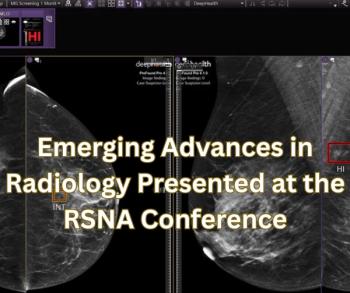Using MR imaging–guided strategies in the detection of prostate cancer is cost-effective compared with the standard biopsy strategy in a decision-analysis model, according to a study published in the journal Radiology. Researchers from University Hospitals Case Medical Center and Case Western Reserve University, both in Cleveland, Ohio, sought to determine the cost-effectiveness of multi-parametric diagnostic MR imaging examination followed by MR imaging–guided biopsy strategies in the detection of prostate cancer in biopsy-naive men presenting with clinical suspicion of cancer for the first time. The researchers created a decision-analysis model for biopsy-naive men who had been recommended for prostate biopsy on the basis of abnormal digital rectal examination results or elevated prostate-specific antigen levels. The groups were divided by age: 41-to-50 years, 51-to-60 years, and 61-to-70 years. The researchers evaluated three major strategies: • Standard transrectal US-guided biopsy; • Diagnostic MR imaging followed by MR imaging–targeted biopsy, with no biopsy performed if MR imaging findings were negative; and • Diagnostic MR imaging followed by MR imaging–targeted biopsy, with a standard biopsy performed when MR imaging findings were negative. The following three MR imaging–guided biopsy strategies were further evaluated in each MR imaging category: • Biopsy with cognitive guidance;• Biopsy with MR imaging/US fusion guidance; and • In-gantry MR imaging–guided biopsy. The primary outcome measure was net health benefit (NHB), measured as quality-adjusted life-years (QALYs) gained or lost by investing resources in a new strategy compared with a standard strategy at a willingness-to-pay (WTP) threshold of $50,000 per QALY gained. Probabilistic sensitivity analysis was performed by using Monte Carlo simulations. The results showed non-contrast MR imaging followed by cognitively-guided MR biopsy was the most cost-effective approach, yielding an additional NHB of 0.198 QALY compared with the standard biopsy approach. There was no standard biopsy if MR imaging findings were negative. Non-contrast MR imaging followed by in-gantry MR imaging–guided biopsy (also no standard biopsy if MR imaging findings were negative) led to the highest NHB gain of 0.251 additional QALY compared with the standard biopsy strategy. All MR imaging strategies were cost-effective in 94.05 percent of Monte Carlo simulations. Analysis by age groups yielded similar results. "Many consider MRIs to be cost-prohibitive, especially when evaluating for a common entity such as prostate cancer,” study advisor Vikas Gulani, MD, PhD, said in a release. “This was our expectation, as well, prior to doing this work, but our study found the opposite. We found that performing MRI before biopsy and using that information to alter biopsy pathways would be a strategy that would add health benefits to the patient population in a cost effective manner." Gulani is an associate professor of radiology, urology, and biomedical engineering at Case Western Reserve University School of Medicine, and member of both the Case Comprehensive Cancer Center and Case Center for Imaging Research.





























